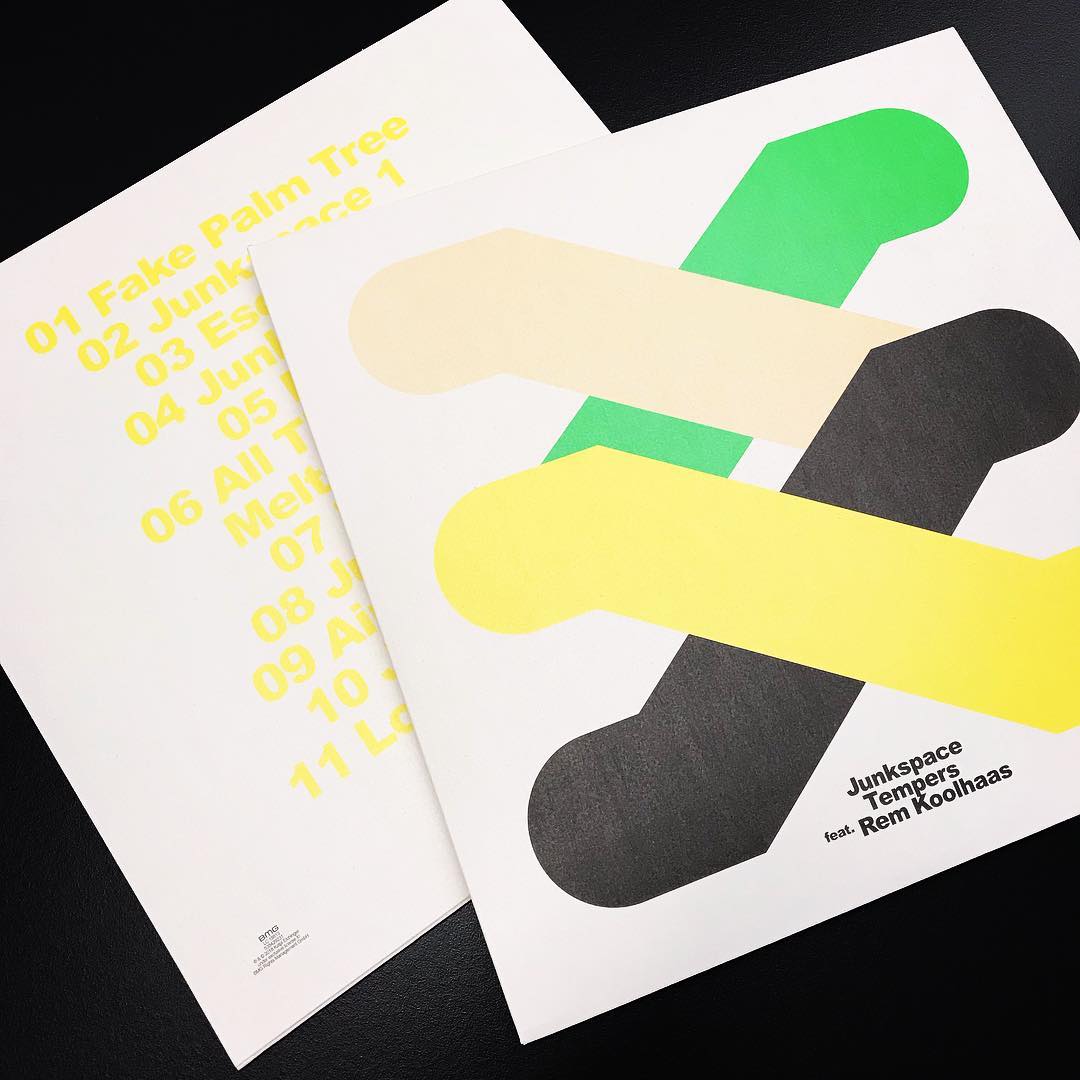
Concept album dedicated to the shopping mall by NYC duo Tempers featuring Rem Koolhaas.
If architecture is indeed frozen music, JUNKSPACE is what melting shopping malls might sound like.
I conceptualized and produced JUNKSPACE after I interviewed Rem Koolhaas about the remodeling of the KaDeWe department store in Berlin. Visionary, controversial and undoubtedly one of the most important architects of our time, Koolhaas is also the author of Junkspace, the definitive essay on shopping malls.

Meeting Koolhaas was exciting, because shopping malls had been a fascination of mine ever since reading Jean Baudrillard’s The Consumer Society and The Romantic Ethic and the Spirit of Consumerism by Colin Campbell whilst still at university. J.G. Ballard and his novels Super Cannes and Kingdom Come had deepened my interest in these hyperreal churches of the suburbs where people graze happily in the eternal retail present and – as Ballard put it – everything good has a barcode.
It was my encounter with Koolhaas, which triggered the idea for this album. Afterwards I called up friends of mine, the New Yorker electro duo TEMPERS – Jasmine Golestaneh and Eddie Cooper – and asked them whether they’d be interested in making an album dedicated to the shopping mall. Having spent much of their teenage years in North American malls and thus accumulated a wealth of mall memories and associations, they said “yes” and we set about making JUNKSPACE.
We were almost finished with the songs – the lyrics written by Jasmine and the songs written and produced by Jasmine and Eddie – when Rem Koolhaas gave me his permission to use the my recording of our interview on the album. Rem disagrees with Johann Wolfgang v. Goethe and Arthur Schopenhauer. Rem does not think that architecture is frozen music, but rather frozen episodes, i.e. scenes from a movie. So maybe JUNKSPACE is not the sound of melting shopping malls, but of a movie that’s yet to be made.
Cover design by Herburg Weiland, Munich.
Quotes by Rem Koolhaas from our conversation:
In European society it’s not really tasteful to confess that you’re enthusiastic about shopping. But in other cultures that is not an issue. In other cultures it is actually a necessity for interaction. Everyone does it, but few of us have an eloquent way of describing why. Or for shedding our guilt.
I teach at Harvard. The basis of my teaching is not so much to talk about what I know, but to work with my students to generate insights and knowledge. I didn’t know anything about shopping, so we started to explore. I realized that when I started to look at shopping that not a single official school of architecture had had any program on shopping for 40 years. So that seemed completely crazy. That there is something so crucial and such an important part of the economy was totally off limits for architects. I tried to describe the aesthetic language of the shopping mall in an article called “Junkspace,” which tried to define every single visual mutation that we are seeing now.
It’s about spaces that eliminate any kind of critical dimension that therefore try to eliminate also objective conditions. If you look at 19th century shopping it seems that at the time they were more able to deal two realities at the same time. With reality but also with what shopping had to offer. It was maybe more exotic and therefore not so difficult to integrate. If you think about today, the essence of shopping is to eliminate reality as much as possible.
KE: How do you design better malls? What avoid turning a mall or a store into a “junkspace”?
One of the key things is to end the endlessness. And that’s part of trying to insert some sense of reality.
I am very nervous about the whole idea of a brand. Branding. Especially the American interpretation of a brand, which is to reduce something to an essence and once you have the essence it can never change. It’s always repetitive and what we’ve been trying to do for Prada is that it’s a brand that can always be totally different and to maintain unexpectedness. And that is directly related to my own sense of claustrophobia, that I get claustrophobic when an identity is too strong or too obvious. Or too permanent or too much of a given. I always need to find the escape from the obvious.
We work in architecture in a way that could be described as cinematographic. It’s about the sequence of spaces and images that you can put together in a project.
KE: If architecture is frozen music…
It’s not! It’s frozen episodes. It’s very similar to a script where you put episodes together and create suspense. There’s always sociology, anthropology politics but also imagination and polemics that we try to create as a kind of cocktail.